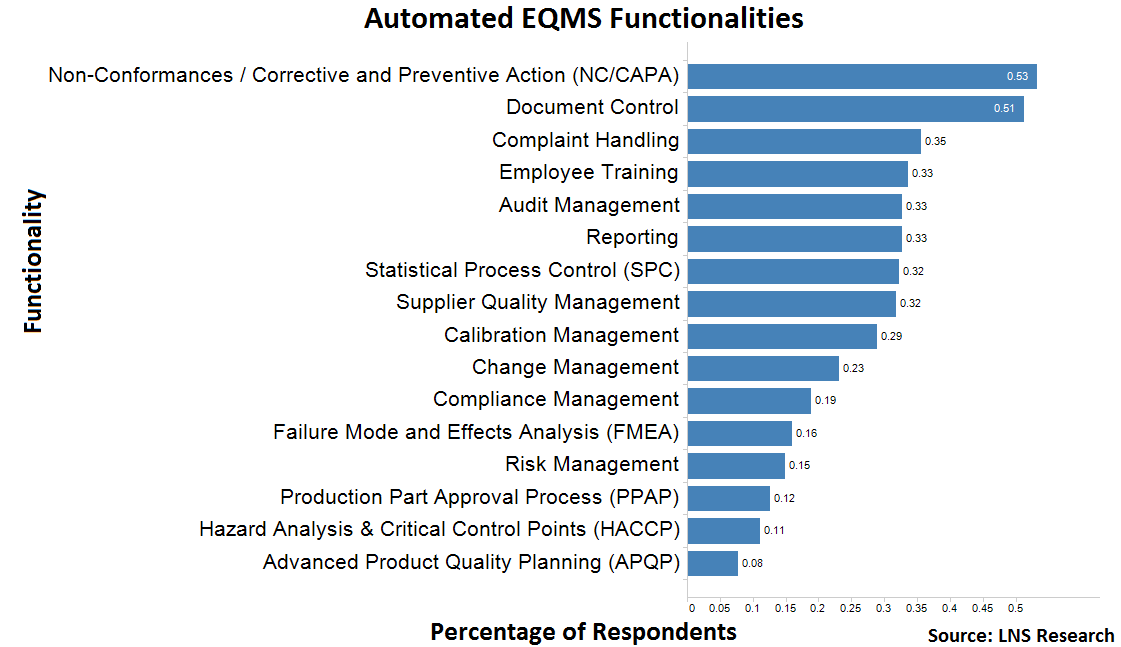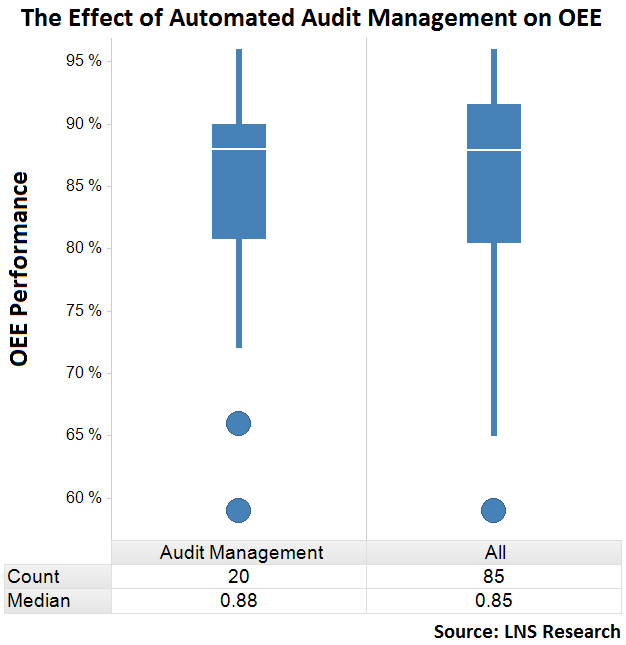Tightening regulations, along with heightened consumer expectations are impacting the approach organizations are taking with compliance. To effectively mitigate risk and ensure the quality of products and processes, a robust set of audit management capabilities is required.
With the complexities of today's global economy, audit management strategies around people, processes, and technology have evolved. As seen with the increasing adoption of automated audit management solutions, strategies that once worked are becoming obsolete.
This post will investigate the traditional approach to audit management. Then, with the use of benchmark data from the 2012-2013 LNS Research Quality Management Survey, I'll discuss the benefits of automating the process.
Traditional Approaches to Audit Management Strategy
Audit management has been the cornerstone of many organization's compliance mangement programs and more recently has also played a large role in operational risk management programs. While audits can take place both internally (quality audit, equipment audit, process audit, etc.) and externally (supplier audit), processes are generally developed to ensure a process or product is within specification.
In the past, it was typical for companies to establish audit management procedures with a combination of email alerts and checklists, most of which was done manually with programs such as Microsoft Excel. These procedures include a number of processes, such as planning, scheduling, issue tracking, escalation, and resolution.
With the distributed nature of many operations, these strategies were often local or unique to a plant or division rather than a corporate standard. They tended to reduce operational risk, but the benefits were limited with standardized processes that could relay information to the broader enterprise risk portfolio.
Automating Audit Management
With the ability to centralize, streamline, and standardize processes using today's emerging technologies, it's clear why the approach mentioned above is no longer optimal. Taking advantage of enterprise software capabilities, many organizations are building the audit management process into a unified information management system.
Spearheading the move to automated audit management capabilities is the relatively new software category Enterprise Quality Management Software (EQMS). Many software vendors, whether ERP, MES, PLM or pure-play EQMS, offer some type of EQMS functionality. LNS's 2012-2013 Quality Management Survey shows 2012 adoption rates.

The chart above displays the results from the question "Which EQMS functionalities does your organization currently have implemented?" As shown, 33% have adopted automated audit management capabilities. While more regulated industries have a higher probability of adopting automated audit management capabilities, and these results show the aggregate data across all industries, this is not all that surprising.
It's likely that a majority of the adopters noted above were from more compliance-centric industries. The remainder of organizations may still manually conduct audits. Though, because the global benefits of automated audit management capabilities extend to beyond just those in highly regulated industries, I expect to see more implementations in the future.
Operational Benefits of Audit Management Software
When built into the broader enterprise IT architecture, audit management data can be communicated across a global platform and also integrated into other EQMS functionalities, such as Corrective and Preventive Action Procedures. As a consequence, it can have stronger effects on quality as well as overall business performance.
To put the holistic benefits of automated audit management capabilities into perspective, it may be a good idea to show the impact it has on a key operational metric that includes quality, Overall Equipment Effectiveness (OEE). In the 2012-2013 Quality Management Survey, we asked executives for their company's OEE performance. The chart below cross-references automated audit management adoption with OEE performance.

As illustrated in the bloxplot above, organizations that have implemented automated audit management capabilities have a median OEE that's 3% higher than those that have not.
For those companies that are new to OEE a median improvement of 3% may seem marginal, but this difference can have a real impact on operational performance and can translate into millions of dollars for large organizations. LNS Research is currently recruiting executives with experience with the transition from manual to automated audit management. If you would like to be highlighted as a thought leader in your industry, please email mike.roberts@lnsresearch.com.

You might also be interested in:
Taking Overall Equipment Effectiveness beyond the Shop Floor
CAPA Drives Dramatic Improvement in Product Compliance [DATA]
5 Key Steps to Implementing Enterprise Quality Management Software